JICA Scholarships Program for Japanese Brazilians
Theme: Fisheries and wildlife management in Japanese SATOUMI and SATOYAMA
including World Heritage sites
by Prof. Hiroyuki Matsuda last updated on 11/01/2014 10:00:05
last updated on 11/01/2014 10:00:05
email: matsuda ynu.ac.jp
ynu.ac.jp
http://ecorisk.ynu.ac.jp/matsuda/index-e.html Blog Facebook
Faculty of Environment and Information Sciences, Yokohama National University
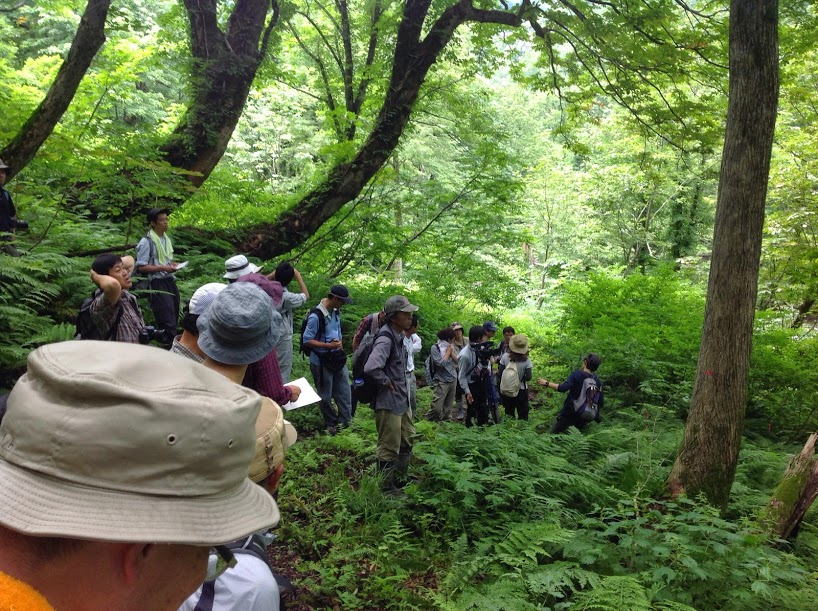
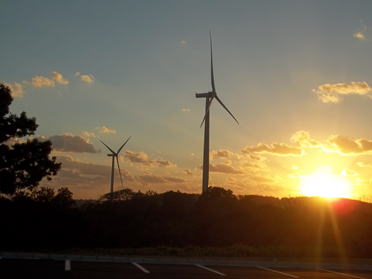
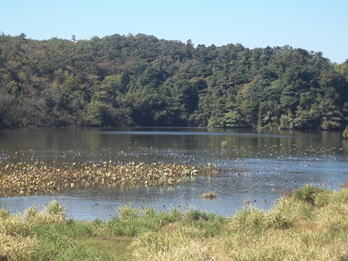
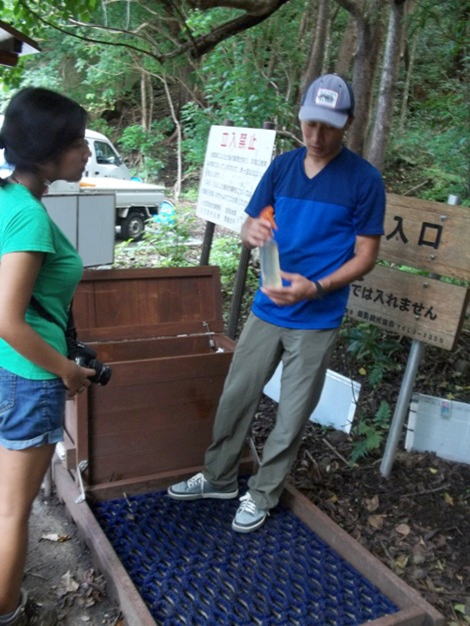
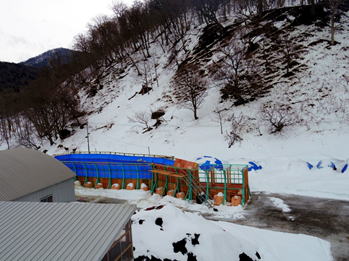
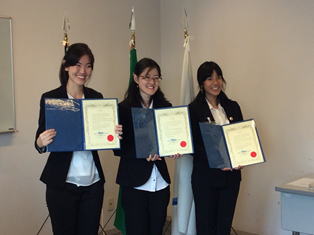
Long term: 10 months - 1 or 2 person(s)
Starting from May 2015
Summary: Agriculture, forestry and fisheries villages in Japan are in crises, plagued by depopulation, ageing,economic globalization, decline of coastal fisheries resources, and damage by overabundant wildlife. You will gain hands-on experiences of wildlife and fisheries management in variety of SATOYAMA (agriculture/forestry) and SATOUMI (coastal fisheries) sites in Japan, including World Heritage sites (Yakushima, Shiretoko, Ogasawara and Okinawa)
Keywords; Adaptive risk management, Consensus building, Ecosystem approach, Ecosystem
services, Mathematical modelling, Human dimensions, UNESCO's Man and the
Biosphere Programme, Education for Sustainable Development
Goal: A general overview of fisheries resource, wildlife, and protected area
management practices will be examined, and applicable technology on a case-by-case
basis will be explored.
Expected outcomes: The scholarship recipients will develop a deep understanding of adaptive
management processes and the ecosystem approach for sustainable fisheries,
wildlife management and protected areas, including control of terrestrial
and marine mammal (seals) populations, as well as bird strike management
in wind farms. They will gain experience on Cost-Benefit analysis, and
will study Local Stakeholder Consensus Building practices, and the role
of scientists in environmental management. The theory of interdisciplinary
sustainability science and practice will be thoroughly explored.
Candidates of themes and study/visiting sites:
- Fisheries management in Yokohama (Fisheries Cooperative Association), Okinawa (Marine Protected
Area), Sado Island (Shrimp Fishery), Shiretoko World Heritage (WH, co-management),
seafood company (Aquaculture) [Matsuda et al. 2010]
- Deer population management in Kanagawa, Shiretoko WH, and Yakushima WH [Kaji et al. 2010]
- Bear population/behavior management in Hokkaido Island, Shiretoko WH (for population control), and Shikoku
Island (endangered local population) [Ohta et al. 2012]
- Damage control of pest animals on fisheries: cormorants in Lake Biwa; Steller sea lions in Hokkaido Island, and harbor
seals in Cape Erimo [Matsuda et al. 2015]
- Bird strike risk management in wind farms in Awara (geese in Ramsar site), Tohoku/Hokkaido (endangered eagles),
Cape Soya (migration point to Sakhalin) [Sugimoto & Matsuda 2011]
- Wild boar management near evacuation zone of Fukushima NPP [Matsuda et al. 2013]
- Other sites within Japan can be considered.
- We can invite related foreign persons for discussion.
English Lectures and Exercises
- Environmental Management Strategy for Infrastructure (Course of foreign graduate students supported by World Bank)
- Theory of Ecological Risk Management (Japanese in odd years, English in even years. Full English handouts are
provided)
- Case Studies on Environmental Risk Management (mainly for PhD course students)
- Lab member seminar (English or Japanese with English slideshow)
- ILEK Project International symposium (see web site)
- UNESCO's MAB Program meeting (EABRN) in Shiga Highland
- English symposium, workshop will be held (past related events are listed
in H.M.'s web site). JICA will support financially your attendance in academic meetings and
field trips. Travel and accommodation costs for joining several events
within Japan that H.M. or other lab members attend will be covered..
Final presentation by JICA
Past JICA scholars in my lab
- Darien D. Mizuta (水田) during 2015-16
- Sara Otsuki (大月)during 2014-15
- Tania Muraoka (村岡)during 2014-15
- Alexsis Nakandakari (仲村渠, from Peru) during
- 2012-13 "Identified opportunities to be implemented in Peru for first
approach to ecosystem based and community based management schemes into
the Peruvian Fishery, based on the experience of Japanese fishery management."
Hiroyuki Matsuda
Profile see Research Activities,
Pew Marine Conservation Fellow since 2007
Former President, Ecological Society of Japan and East Asian Federation of Ecological Societies
Scientific Council for Shiretoko WH and Yakushima WH
Japanese National Committee for MAB
Photo Gallery
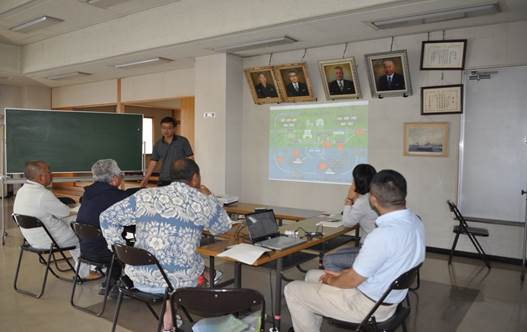
Yokohama Fisheries Cooperative Association on June 7, 2014 |

Minami Alps Biosphere Reserve on July 6, 2014 |

Tadami Biosphere Reserve on Aug. 4, 2014 |

Awara Wind Farm on Oct. 17, 2014 |

Katano Kamoike Lake (Ramsar site) on Oct. 18, 2014 |

Hahajima Island on Oct. 26, 2014 |

Deer trap in Shiretoko |
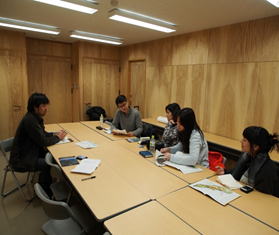
Interview at Toyama |

Final presentation at JICA |
|
Related articles
- Vlachopoulou EI, Mizuta DD, Matsuda H, Makino M: Social-Ecological Systems Analysis in the Concept
of World Heritage: Fisheries Management in the Shiretoko World Natural
Heritage Site. 5th International Symposium on Environmental Sociology in
East Asia, 31 Oct 2015, Sendai.
- Otuki SAP, Muraoka TR, Okano T, Matsuda H: Biocultural Diversity of Yakushima Island. PACON (Pacific Congress of Marine Science and Technology) 27 Aug. 2014, Tokyo.
- Muraoka TR, EI Vlachopoulou: The Potential of the Satoumi Framework to Address Conservational
Issues. PACON (Pacific Congress of Marine Science and Technology) 27 Aug.
2014, Tokyo.
- [B31] Makino M, Matsuda H, Sakurai Y (2012) Expanding fisheries co-management
to ecosystem-based management: A case in the Shiertoko World Natural Heritage
area.
- [B36] Matsuda H (2012) Yakushima Island Biosphere Reserve World Network of Island and Coastal Area Biosphere Reserves. Sites for sustainable island and coastal development :212-217
- [A92] Kaji K, Saitoh T, Uno H, Matsuda H, Yamamura K (2010) Adaptive management
of a Sika deer population in Hokkaido, Japan: theory and practice. Population
Ecology 52:373-387 [reprint]
- [A101] Ohta U, Jusup M, Mano T, Tsuruga H, Matsuda H (2012) Adaptive management
of the brown bear population in Hokkaido, Japan. Ecol Model 242:20-27
- [A85] Makino M, Matsuda H, Sakurai Y (2009) Expanding Fisheries Co-management
to Ecosystem-based management:A case in the Shiretoko World Natural Heritage
area, Japan. Marine Policy 33:207-214
- [A113] Vlachopoulou EI, Makino M, Matsuda H (2014) Fisheries vs Marine Conservation:
Lessons learned from the Shiretoko World Natural Heritage Site. Annals
of Marine Sociology of Polish Academy of Science : 23:36-43,
- [A113] Matsuda H, Yamamura O, Kitakado T, Kobayashi Y, Kobayashi M, Hattori
K, Kato H (in press) Beyond dichotomy between conservation and management
of marine mammals in Japan. Therya
- [A95] Sugimoto H, Matsuda H (2011) Collision risk of White-fronted geese with wind turbines. Ornithological Science 10:61-71Unibio Press Award in 2012.
- [F111 mov] Matsuda H: Seafood Safety and Public Policy, Exploring the impacts of
the Fukushima Dai-ichi Nuclear Power Plant Accidents on the Ocean, 9 May
2013, Woods Hole Ocean Institute
- [A93] Matsuda H, Makino M, Tomiyama M, Gelcich S, Castilla JC (2010) Fishery
management in Japan. Ecol Res 25:899-907
 last updated on 11/01/2014 10:00:05
last updated on 11/01/2014 10:00:05  last updated on 11/01/2014 10:00:05
last updated on 11/01/2014 10:00:05 ![]() ynu.ac.jp
ynu.ac.jp 













